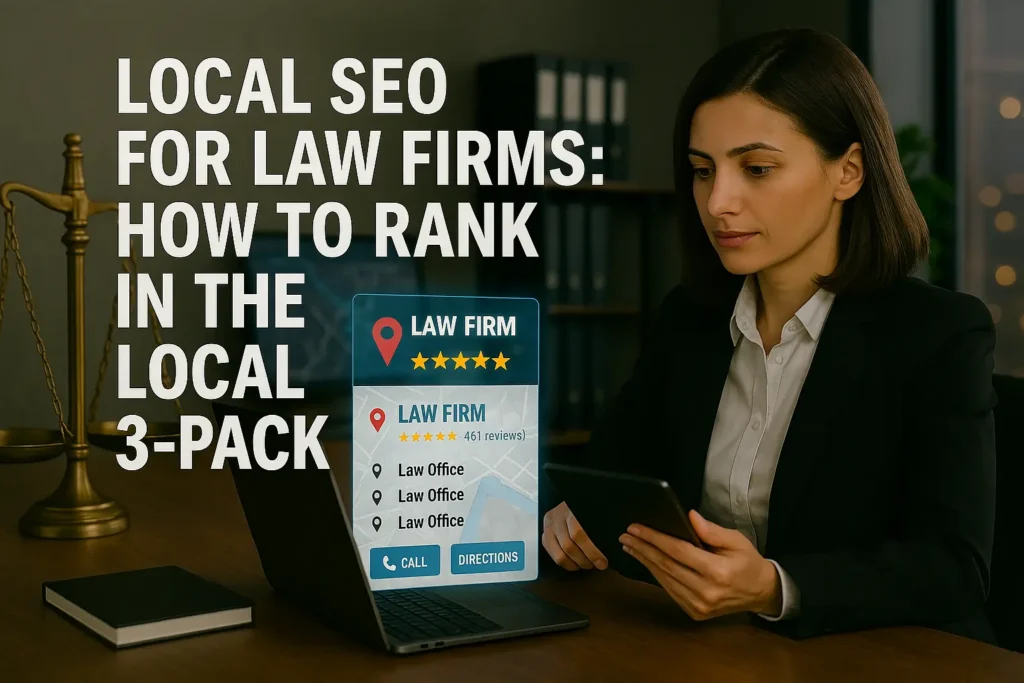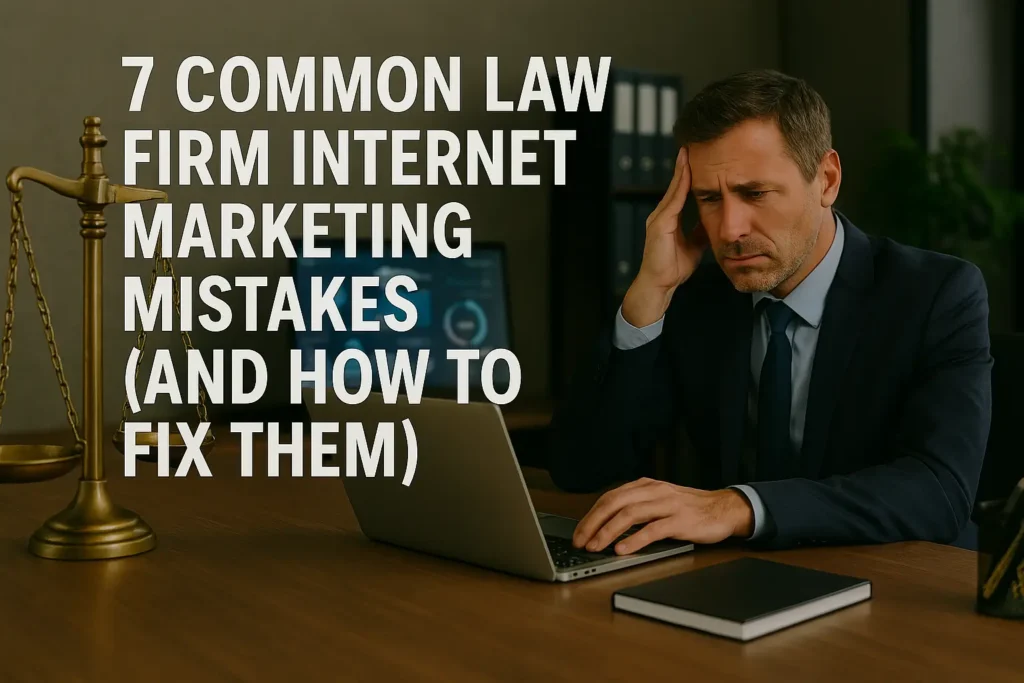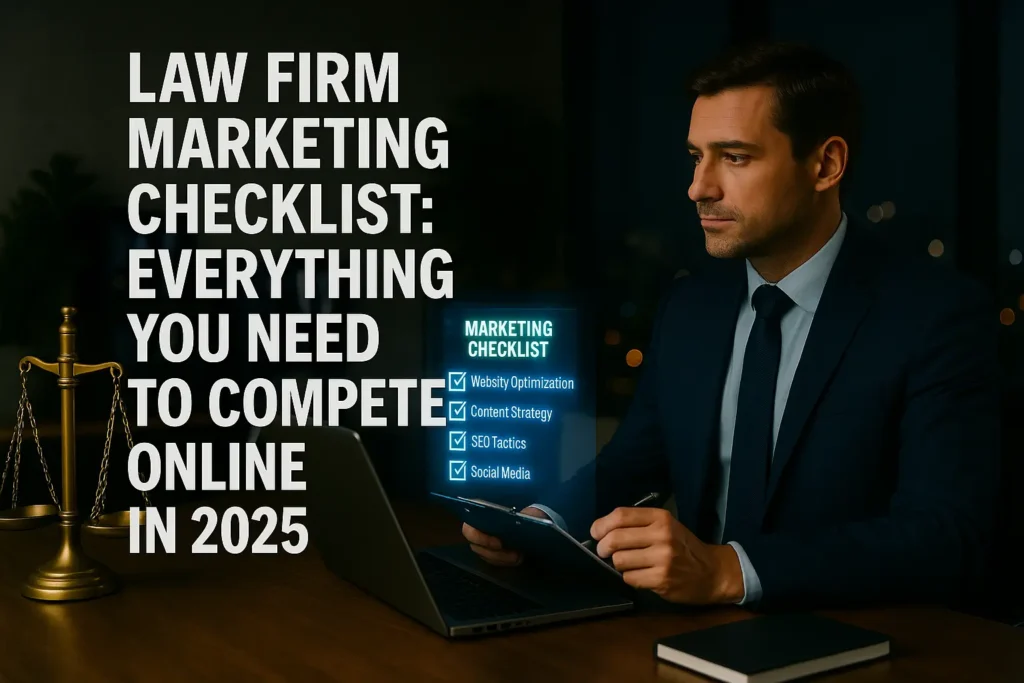For law firms in 2025, ranking in Google’s Local 3-Pack — those top three map listings that appear before organic results — isn’t just helpful. It’s essential.
When someone searches for “personal injury lawyer near me” or “divorce attorney in [city],” the Local 3-Pack captures over 60% of all clicks. If your firm isn’t showing up there, you’re handing clients to competitors.
This guide breaks down Local SEO for law firms into clear, actionable steps to help you dominate your area — even if you’re starting from scratch.

Local SEO for Law Firms
What Is the Local 3-Pack?
The Local 3-Pack is the boxed map result Google shows for local-intent searches. It displays:
- A map with pin drops
- Three business listings with ratings, hours, and addresses
- Direct links to call, directions, and websites
It’s powered by Google’s local algorithm, which weighs relevance, distance, and prominence. Your law firm’s Google Business Profile (GBP) is the foundation of that visibility.
Why Local SEO Matters for Law Firms
Local SEO helps law firms appear in:
- Google Maps
- Local 3-Pack (Map Pack)
- Organic search with location-rich keywords
Clients searching for legal help want nearby, trustworthy professionals — fast. Local SEO ensures your firm is:
- Visible when they search
- Credible when they compare
- Easy to contact with one click
Step-by-Step Local SEO Checklist for Law Firms
Let’s break down the exact actions you need to take to rank.
1. Claim and Optimize Your Google Business Profile (GBP)
Your GBP listing is the #1 factor for Local Pack rankings.
What to do:
- Claim or verify your profile at google.com/business
- Use your official business name (no keyword stuffing)
- Ensure your address matches your office location
- Add a local phone number (no call centers or 800s)
- Choose the correct primary category (e.g., “Divorce Lawyer”)
- Add secondary categories if relevant (e.g., “Family Law Attorney”)
- Write a compelling business description with target city and services
- Upload high-quality photos (logo, team, office exterior/interior)
- Set accurate business hours
- Enable messaging if available
Bonus tip: Post updates weekly to show activity (legal tips, community news, office hours, case wins).
2. Build Local Citations and Ensure NAP Consistency
NAP = Name, Address, Phone number
Consistency across the web boosts trust signals to Google.
What to do:
- Submit your business to key legal directories: Avvo, Justia, FindLaw, Martindale-Hubbell, Super Lawyers
- Get listed on general directories: Yelp, BBB, Apple Maps, Bing Places
- Check for duplicate listings and remove them
- Use tools like BrightLocal or Whitespark to manage citations
- Keep social profiles (Facebook, LinkedIn) updated with same NAP
Important: Your website footer should match your GBP address exactly.
3. Get More 5-Star Reviews — and Respond to All of Them
Reviews are the #2 local ranking factor — and also a huge trust factor for potential clients.
What to do:
- Ask every satisfied client for a Google review
- Send a direct link (available in GBP dashboard)
- Include keywords in your requests: e.g., “If you found our divorce law help in Austin valuable…”
- Reply to every review — with empathy and professionalism
- Address negative reviews calmly and publicly
Google reviews with city + service keywords (“Austin DUI attorney helped me win…”) can boost rankings.
4. Create Location Pages on Your Website
Your site should have dedicated pages for each office or city served. These support your local authority and help you rank organically too.
What to include:
- City-specific page (e.g.,
/houston-personal-injury-lawyer/) - Embedded Google Map of your office
- Local case studies or client testimonials
- Driving directions and parking info
- Internal links to practice area pages
- Use schema markup with location and legal service tags
Use Schema.org LocalBusiness markup to help search engines better understand your NAP and services.
5. Build Local Backlinks
Google weighs how popular and trustworthy your firm is — based on who links to you.
What to do:
- Sponsor local charities, events, or bar associations
- Get featured in local news or legal roundups
- Submit guest content to legal blogs in your region
- Join your Chamber of Commerce and local business groups (many link back)
- Use tools like HARO or Terkel for contributor quotes
Backlinks from local or legal-relevant domains carry more weight than generic ones.
6. Add Legal Blog Content With Local Context
Blog content helps your overall SEO — and supports local relevance when location terms are included.
Blog topic examples:
- “How to File for Divorce in Dallas, TX”
- “Do I Need a Personal Injury Lawyer After a Minor Crash in Miami?”
- “Top 5 Mistakes After a DUI Arrest in Phoenix”
Include local landmarks, courts, news, or law changes to show hyper-relevance.
Add FAQ schema and geo-specific headings to maximize your chances of appearing in featured snippets.
7. Track Your Local SEO Progress
If you’re not tracking it, you’re guessing.
What to do:
- Use Google Search Console to track local keywords
- Use Google Business Insights to track views, clicks, and calls
- Use call tracking numbers for ads or landing pages (e.g., CallRail)
- Monitor reviews and rating growth
- Track Local Pack rankings with BrightLocal or Local Falcon
Monitor metrics like:
- Impressions in Google Maps
- Calls from GBP
- Local keyword rankings
- Driving direction requests
Final Word: Outrank Competitors, One Local Step at a Time
Ranking in the Local 3-Pack takes more than just filling out a profile — but it’s absolutely achievable for law firms that follow a process.
By mastering Local SEO for law firms, you make your firm easy to find, easier to trust, and impossible to ignore.
Start with your Google Business Profile, get reviews, create local pages, and earn links from real sources in your city. Do that consistently — and your law firm won’t just rank locally. It will lead.
Frequently Asked Questions
Read: The Complete Guide to Law Firm Internet Marketing in 2025




